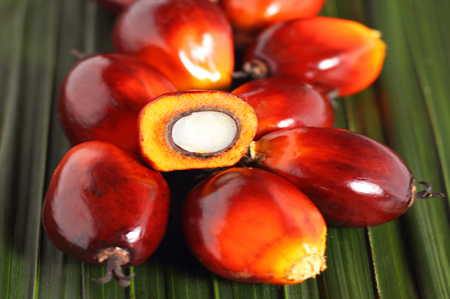Malaysian palm output to fall at fastest rate in 17 years
Category: Oilseeds
 (Agrimoney) – Palm oil production in Malaysia will fall this season at it fastest in 17 years thanks to the floods which have revived controversy over the conversion of forestry into plantation land.
(Agrimoney) – Palm oil production in Malaysia will fall this season at it fastest in 17 years thanks to the floods which have revived controversy over the conversion of forestry into plantation land.
The US Department of Agriculture bureau in Kuala Lumpur cut by 1.55m tonnes their forecast for palm oil output this season in Malaysia, the second-ranked producer and exporter of the vegetable oil, where heavy rains have hampered palm fruit harvesting and processing.
The downgrade cut the forecast for palm oil production in 2014-15, on an October-to-September basis, to 19.7m tonnes – a drop of 2.3% year on year, the biggest since 1997-98.
Previously the bureau had pencilled in a 5.4% rise in output.
‘Lagged effect’
The revision followed data from the Malaysian Palm Oil Board earlier this month showing that Malaysia’s palm oil production slumped by 23% month on month in December, particularly in peninsular Malaysia, where the flooding was worst, and output declined by 30%.
East Malaysia volumes dropped by 14%.
However, the bureau said its forecast assumed a “lagged effect on output” of the floods, which have been billed the worst in 40 years, besides the decline already confirmed.
The seasonal downturn in output which typically occurs around October-to-March will “only be exacerbated by the disruptions in collection, transport and processing caused by the lingering effects of the flooding,” the bureau said in report.
“Reportedly, in some areas, it may take up to two-to-three months to repair damaged infrastructure.”
Pressure on plantations
Indeed, the USDA data assume imply an estimate that production from January to September will rise by only 0.2%, compared with a 6.9% jump in the first nine months of 2014.
The Malaysian Palm Oil Board this week pegged Malaysian output in calendar 2014 at 20.09m tonnes, below a previous estimate of 20.5m tonnes, but still representing a 2.1% rise year on year.
Meanwhile, longer-term hopes for expansion in Malaysian oil palm plantations have come under further pressure since the flooding, with some environmentalists blaming forestry clearance for exacerbating the risks of heavy water run-off.
Malaysia’s opposition leader, Seri Anwar Ibrahim, on Thursday called for the conversion of forestry into agricultural land to be suspended, pledging support for campaign by Sahabat Alam Malaysia, an environmental group, for a freeze on forestry-to-plantation conversions.
Separately, 25 environmentalists, in an open letter to Malaysia’s prime minister, Najib Razak, “in the aftermath of the devastating floods” also backed a moratorium on conversions.
The environmentalists, who included the chief executive of WWF-Malaysia, demanded enforcement of a “fundamental principle that forest reserves should remain under natural forest cover and not be replaced with tree plantations and other agricultural crops”.
Prices fall
Nonetheless, despite the USDA bureau downgrade, and the enhanced threat to plantation expansion, palm oil prices stood 1.2% lower at 2.245 ringgit a tonne in late deals in Kuala Lumpur.
Prices have been undermined this week by cargo surveyor data showing a sharp drop in Malaysian palm shipments in the first 20 days of January, and a downgrade by official Australian meteorologists to their forecast for the likelihood of an El Nino weather pattern this year.
“Since late 2014, most… indicators have eased back from borderline El Niño levels,” the bureau said, citing a “low chance” of a return to these levels.
“Neutral conditions are considered the most likely scenario through into autumn.”
The bureau had previously forecast a 70% chance of an El Nino arriving by February.
The weather pattern is associated with unduly dry weather in South East Asia, lowering palm production potential.




